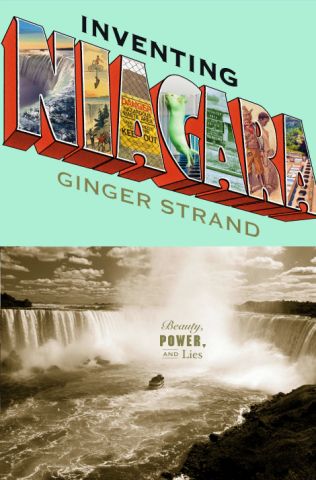

|
Home
The
CD Book
View Parts of the Book
Book Reviews & Quotes
History
The Big List of Leadership
History of the Manhattan Project Atomic
Traveling
|
  The Traveler's Guide to Nuclear Weapons is a favorite of U.S. history and science buffs around the world who are interested in or concerned about nuclear weapons and the places where they were made. Samples of some of the things that people are saying about this ground-breaking publication are shown below.
These samples are composed in Portable Document Format (PDF). If you don’t have AdobeTM AcrobatTM Reader, you can download a free reader now.
Download Adobe Acrobat Reader.
Articles About the AuthorsBook ReviewsOther Work by the AuthorsQuotes"The Traveler's Guide to Nuclear Weapons is a uniquely valuable compendium of information about the many facilities across the United States responsible for making the U.S. nuclear arsenal a reality. Ranging far beyond the well known sites like Los Alamos, Hanford, and Oak Ridge, Maroncelli and Karpin provide capsule histories and literal and figurative road maps to a select sampling of the thousands of installations that built the Bomb which many people never realized existed and some would rather forget. Historians, students, former workers, curious neighbors, and atomic tourists will all find much of value in this timely and important book."- Stephen I. Schwartz, Editor of Atomic Audit, The Costs and
Consequences of U.S. Nuclear Weapons Since 1940,
and Executive Director/Publisher of the
Bulletin of the Atomic Scientists"With their Traveler's Guide Mr. Maroncelli and Mr. Karpin have made a major contribution to the scholarship in this area. They have consulted all of the key works and through their extensive travel visited every one of the more than 150 sites that comprise the guide, describing them in great detail and providing maps and photographs. In the process they have demonstrated to the reader how close history is to their everyday lives. It is all around us if we care to see. Buildings we walk by once housed offices that were responsible for building the first atomic bombs during World War II, for example. This approach of focusing on the physical places where America's huge nuclear arsenal was formed sets it apart from most works on this topic. At the same time the authors perform another service by trying to rescue some of the sites that are in danger of disappearing, with a corresponding loss to our history."- Dr. Robert S. Norris, Senior Analyst for the Natural Resources
Defense Council, and Author of Racing For the Bomb,
General Leslie R. Groves, The Manhattan Project’s
Indispensable Man"It's rare to find tour guides who are both thorough researchers and quirky, passionate companions--but here they are. The Traveler's Guide is indispensable, whether you're setting out on an atomic road trip, or just wanting to learn about our nuclear weapons complex."- Ginger Strand, Author of Inventing Niagara: Beauty, Power, and Lies
If you want to learn more about the authors and additional nuclear weapons history, pick up
Inventing Niagara: Beauty, Power, and Lies ="4"> byGinger Strand ="4">. This new book provides an insightful history of Niagara Falls and the surrounding region. Peruse our Photo Gallery to see some of her photographs as well. Click on the book cover to the right to visit Ginger Strand's website or visit Simon & Schuster's website for more information about her book."The only such guide of its kind, it takes PC travelers on a fascinating journey through the secretive sites associated with the U.S. nuclear weapons complex."- Carl VonWodtke, Managing Editor, Military History and MHQ:
The Quarterly Journal of Military History"In my view this CD-ROM book is an indispensable traveler's guide to the nuclear weapons complex not only for the traveler but for the professional historian as well. As a Manhattan Engineer District history buff, I have about 150 books in my library on this subject. The Traveler's Guide to Nuclear Weapons is an excellent addition to my collection. I highly recommend it."- John Taschner in Health Physics Journal (October 2003, Vol 85, No. 4)"I did not have the luxury of carrying The Traveler's Guide to Nuclear Weapons, a new CD-ROM from James M. Maroncelli and Timothy L. Karpin, as I plied the nuclear terrain. I wish I had."- Tim Vanderbilt, Author of Survival City, Adventures Among the Ruins of Atomic America,
Quoted in the Bulletin of the Atomic Scientists (Not Your Typical Road Trip,
November/December 2003, Volume 59, No. 6, pp. 74–75)
All contents copyrighted ©2002 Historical Odysseys Publishers